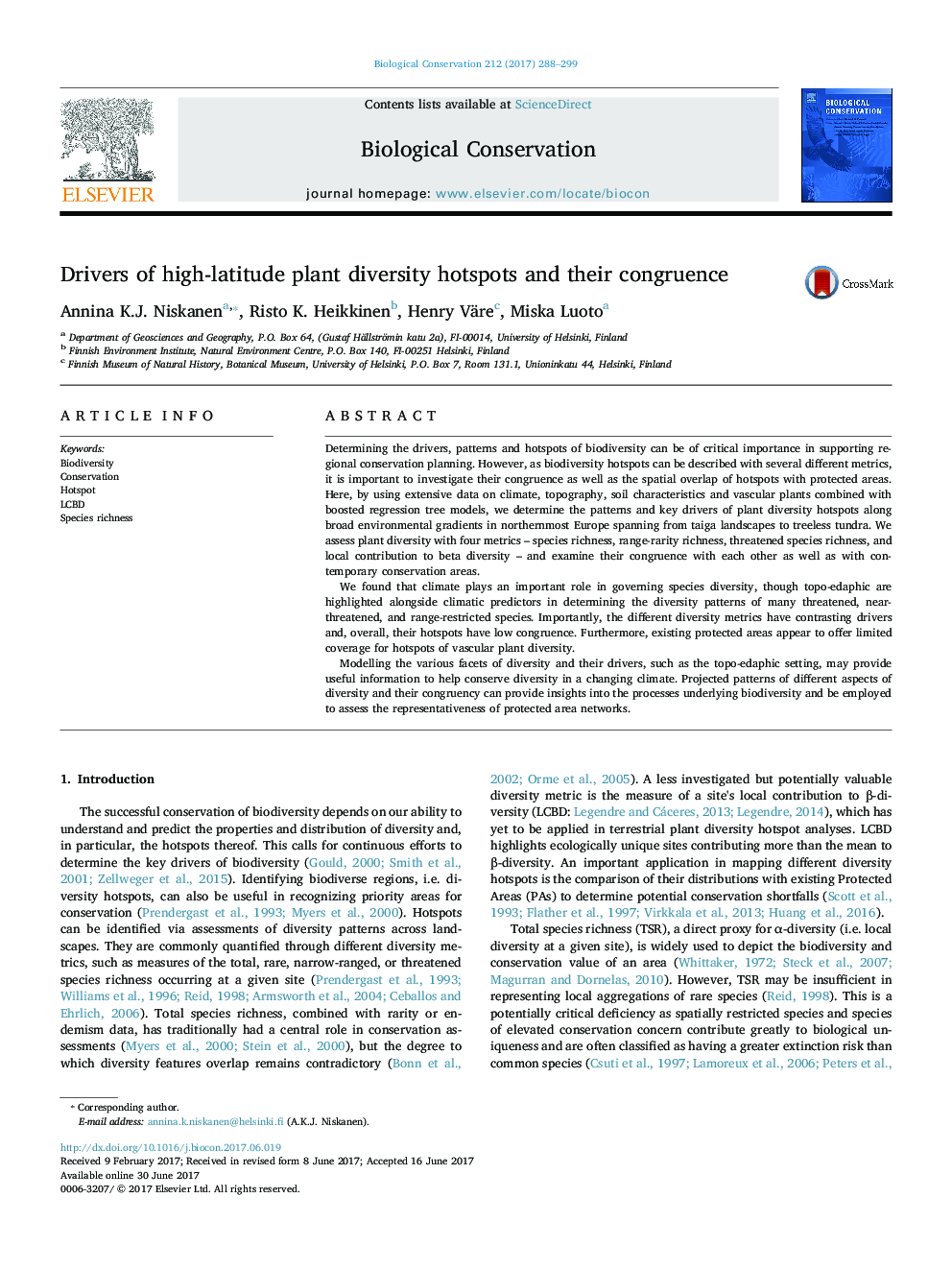| Article ID | Journal | Published Year | Pages | File Type |
|---|---|---|---|---|
| 5743111 | Biological Conservation | 2017 | 12 Pages |
â¢Variability in metric patterns illustrates complexity of factors driving diversity.â¢Climate-dependency of high-latitude plant diversity suggests forthcoming changes.â¢Topo-edaphic drivers may help safeguard threatened and range-restricted species.â¢The different diversity hotspots have low congruence and thus low proxy potential.â¢Protected areas offer limited coverage for high-latitude diversity hotspots.
Determining the drivers, patterns and hotspots of biodiversity can be of critical importance in supporting regional conservation planning. However, as biodiversity hotspots can be described with several different metrics, it is important to investigate their congruence as well as the spatial overlap of hotspots with protected areas. Here, by using extensive data on climate, topography, soil characteristics and vascular plants combined with boosted regression tree models, we determine the patterns and key drivers of plant diversity hotspots along broad environmental gradients in northernmost Europe spanning from taiga landscapes to treeless tundra. We assess plant diversity with four metrics - species richness, range-rarity richness, threatened species richness, and local contribution to beta diversity - and examine their congruence with each other as well as with contemporary conservation areas.We found that climate plays an important role in governing species diversity, though topo-edaphic are highlighted alongside climatic predictors in determining the diversity patterns of many threatened, near-threatened, and range-restricted species. Importantly, the different diversity metrics have contrasting drivers and, overall, their hotspots have low congruence. Furthermore, existing protected areas appear to offer limited coverage for hotspots of vascular plant diversity.Modelling the various facets of diversity and their drivers, such as the topo-edaphic setting, may provide useful information to help conserve diversity in a changing climate. Projected patterns of different aspects of diversity and their congruency can provide insights into the processes underlying biodiversity and be employed to assess the representativeness of protected area networks.
Graphical abstractDownload high-res image (147KB)Download full-size image
